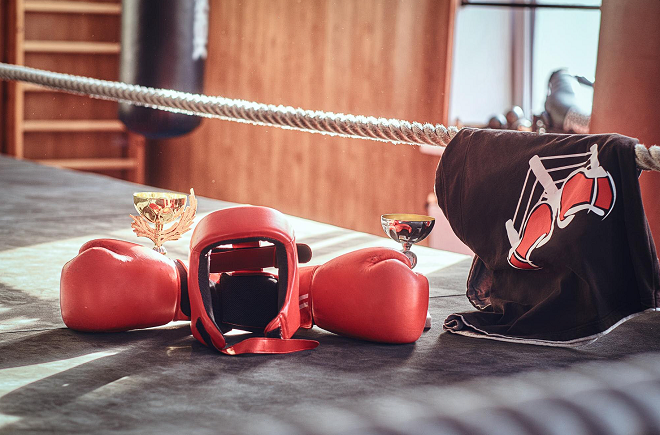The Fight for Gold: How Indian Wrestlers Prepare for World Tournaments

In India, wrestling has never been just a sport. It’s part of the culture—practiced in village akharas, celebrated during local melas, and watched with quiet pride in homes across the country. But preparing to compete internationally? That requires a different kind of grind.
From Mud Pits to Global Mats
The cream of wrestling today is not content with state champions or national marks-they are looking to be world champions in the international arenas. And although to a great extent they remain traditional in basis, modern training has found a critical place. Many fans are also tracking the progress through it. Others use applications such as MelBet mobile to monitor the form, odds, or even international wrestling events as the athletes approach the competition day.
Most of the wrestlers in India also start at a young age, as young as 8 or 9 years old. They are initiated into the sport barefoot, wrestling in dusty pits, by gurus who also impart wisdom. When these players demonstrate potential, they get ushered into another reality: national training, the employment of a coach, dietary supervision, and strict training timetables.
Building a Wrestler: The Modern Indian Method
Ways of becoming world-class are lengthened out more than ever before and are organized more strictly. The days when raw talent is king are gone. Today, all elite wrestlers have a multi-faceted team of trainers: a strength trainer, a technical trainer, a nutritionist, and a physiotherapist. Some even collaborate with professionals in mental performance. The wrestling institutions of India have also now combined a regional toughness in approaching science. And in the background, there is an ever-rising surge of fans, exchanging match highlights, stats, and tournament news on platforms such as MelBet India Facebook, where even before the games start, the fans stay busy.
There are significant events that drive the year of the athlete, and the athlete plans backward in time relative to each event. It does not always depend on remaining fit throughout the year, but on being fit in time. The wrestlers are seasonal and alter their schedule based on their proximity to a competition. Some of these phases are base strength work, technical enhancement, match play, and ultimately, the tapering, which allows one to focus purely on training and resting before an event.
Here’s how their training often breaks down:
| Focus Area | Activities Included | Goal |
| Physical Training | Weightlifting, core work, and agility drills | Build power and durability |
| Mat Practice | Sparring, takedowns, match simulations | Improve technique and reaction time |
| Tactical Analysis | Reviewing footage of past and future rivals | Spot patterns, plan match strategy |
| Recovery & Rehab | Ice therapy, physiotherapy, and active rest | Prevent injuries, maintain mobility |
| Mental Prep | Visualization, focus drills, travel prep | Keep calm under high-stakes pressure |
There is no common strategy in the minds of two wrestlers. Everything revolves around the weight class, physique, previous traumas, and the comfort level a person can bear. It is flexible, but everything is based on consistency. The length of regimes differs because some athletes only perform well when resting long, whereas other athletes only get successful when they spar regularly. Coaches modify drills and high-levels according to how the body recovers and moves dermis on different occasions.
A New Support System
India has had much success in wrestling in recent times due to improved systems. All these have been due to the centralised training camps with better equipment and international sparring partners. The athletes do not go to train in isolation. They constitute a larger team with the same mission.
Coaching has evolved, too. While traditional coaches still play a vital role, newer ones bring in experience from international competition and data-driven methods. Some programs now use motion-capture tools to correct posture during throws. Others track recovery with wearables.
Outside the training center, fans are more involved than ever. Through social media and online pages like MelBet India Facebook, they stay updated on the progress of athletes, schedules, and match results. This constant connection creates more visibility—and more accountability.
Why Indian Wrestling Is Finally Competitive
India’s wrestlers were once seen as scrappy underdogs. That image is shifting. Today, the country produces medal hopefuls in multiple weight categories, across both men’s and women’s brackets.
The difference?
- Scouting starts earlier now, often in school competitions.
- Training is better managed with fewer overuse injuries.
- Athletes get time abroad to spar with world-class opponents.
- Nutrition is modernized, with food plans for every weight cu.t
- Recovery is finally being taken as seriously as training.
And it’s paying off. Recent years have seen Indian wrestlers make the finals of world championships, win Asian titles, and place in Olympic brackets with growing consistency.
When It Gets Real: The Final Weeks Before Competition
What separates world-level preparation from local tournaments is precision. With a month to go, wrestlers don’t train harder—they train smarter. Sessions become shorter but more intense. Sparring is limited. Extra sleep is encouraged. Coaches often simulate match pressure.. Wrestlers reach the host city days ahead, giving their bodies time to adjust to food, weather, and jet lag. Some even bring their pillows and mattresses, sticking to routines down to the most minor details. Because on the day of the competition, no edge is too small.





